
Travis Smola 09.23.25
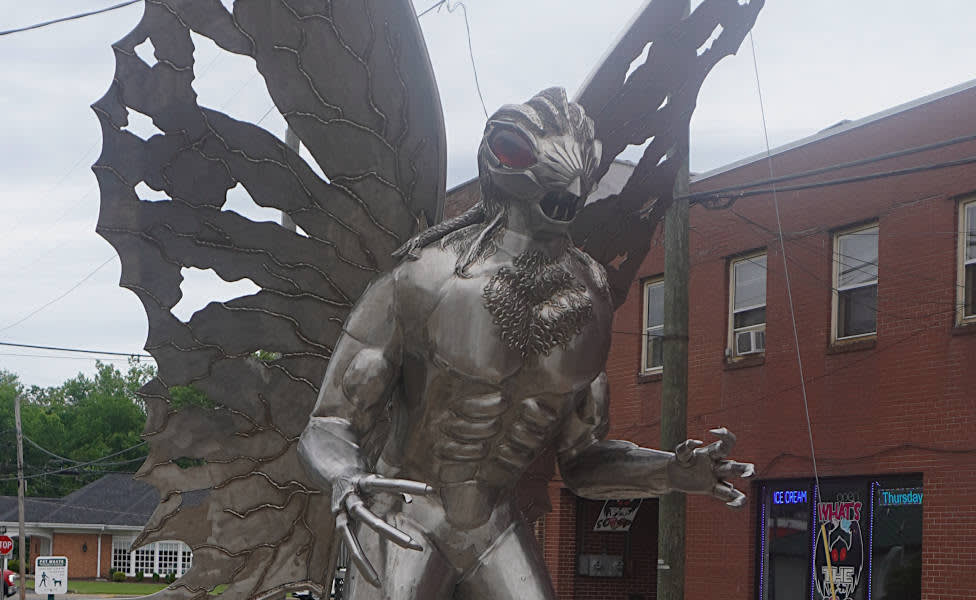
Cryptid animals ride that fine, blurred line between ancient myth and reality. Every corner of the globe has an alleged animal still unknown to modern science. This is not a new phenomenon. Stories about these creatures are hundreds or even thousands of years old. Native American legends have countless tales that stir the imagination, especially for those who frequently visit the outdoors. Correspondingly, many modern-day reports come from avid hunting, fishing, and camping enthusiasts who spend most of their time outside.
Science tends to be skeptical of these legends, but there is enough fact to keep things interesting. With thousands of eyewitness reports of mysterious beasts that fly, creep, and crawl, there must be something more to it. This is not an extensive look at all the evidence, but we will look broadly at the various categories of what defines a cryptid. We will also briefly examine the most interesting and famous ones said to inhabit the United States today.
What is a cryptid?
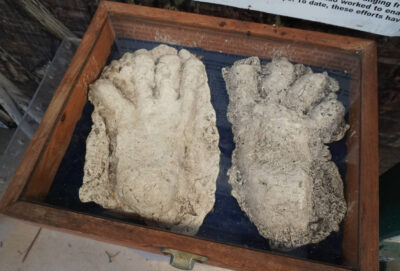
In simplest terms, the Dictionary defines a cryptid as “a creature whose reported existence is unproven, such as Bigfoot or the Loch Ness Monster.” Unlike mythological creatures such as dragons or unicorns, these animals often have at least some documented eyewitness reports associated with them. Scientific circles usually treat these reports skeptically, but the stories are intriguing, nonetheless.
Other known animals often lumped into the cryptid category include ones thought to be previously extinct. For instance, the Tasmanian Tiger, or Thylacine, is a real animal native to Australia and Tasmania that was declared extinct in 1982. However, unconfirmed reports show that the species might still be periodically roaming wild, remote areas. Cryptids also include unconfirmed reports of animals in places where they are not native. One typical example is reports of big cats like mountain lions and panthers outside their home range.
Subsequently, the term “cryptid” has become nebulous in nature. It is usually safe to use as a blanket term for any mysterious or unknown animal.
Persistent tales of cryptids have given rise to the field of cryptozoology, which studies hidden animals. Technically, most scientists still consider this field to be “pseudoscience.” However, a handful of professionals have studied cryptids for decades, despite the ridicule. A prime example is Jeffrey Meldrum, a professor of anthropology at Idaho State University. He has openly studied the possible existence of sasquatch for nearly 30 years.
Has a cryptid ever been found?
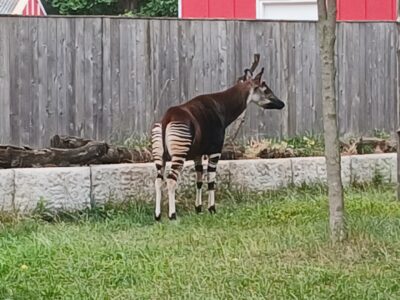
Most skeptics are quick to dismiss claims of cryptid animals. It is hard to blame them when there is a lack of concrete evidence. However, there are notable exceptions. One prominent example is the giant squid. Once a thing of sailors’ stories, it wasn’t photographed in the wild until 2004. Dead ones had washed up on shore, but a confirmed sighting in the wild eluded science for years.
Another good example is the Okapi. The unusual, horned creature inhabits an isolated area of the Democratic Republic of Congo. Scientists treated eyewitness reports with the usual skepticism for years. The striped ungulate is incredibly weird-looking, so we understand the skepticism. However, in 1901, a native tribe provided British explorer Harry Johnston with a skull and pieces of skin. Later, scientists confirmed the elusive Okapi was the only living relative of giraffes.
For years, the only known record of the coelacanth was fossils. This unusual fish has been around long enough to watch the dinosaurs come and go from this planet. Thus, the scientific community was shocked when a fishing trawler hauled in a live specimen off the coast of South Africa in 1938. It turns out they had been alive and well the whole time. Conversely, local anglers scratched their heads in bewilderment at the excitement of the discovery. They had known of the coelacanth’s existence for generations.
Granted, none of these cryptid discoveries are as exciting as Bigfoot or the Loch Ness Monster. However, the Okapi and coelacanth prove it is possible for large, unknown animals to hide on our vast planet.
Bigfoot & Sasquatch Creatures
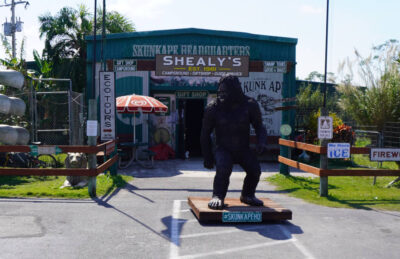
Legends of a tall, hairy, man-like creature are often the first thing most people think of after hearing the word cryptid. Every corner of the globe has some variation of this beast. Stories of Bigfoot date back centuries and are part of Native American lore in the United States. These creatures are six to eight feet tall and weigh over five hundred pounds. Their bodies are covered with black or brown hair. These creatures allegedly leave behind large, three- or five-toed footprints.
Bigfoot’s most famous sighting was in 1967, when the Patterson-Gimlin film was captured in Northern California. Scientists and skeptics still debate the authenticity of this film.
The behavior of these creatures varies from report to report. Most describe a shy, elusive beast that tries to avoid human contact. However, a handful of reports describe an animal that is aggressive towards humans. For instance, in 1924, a Canadian man named Albert Ostman claimed a family of the creatures kidnapped him for six days. Another group of Sasquatches allegedly threw rocks at miners in a Washington cabin near Mount St. Helens the same year. Subsequently, the area of the attack became known as “Ape Canyon.” However, such tales are extremely rare. Most reports are fleeting sightings.
Most sightings originate in the Pacific Northwest, specifically Washington, Oregon, and Northern California. However, beasts with similar descriptions have earned various pet names across the U.S.
Bigfoot: The classic, tall, man-like beast with five toes that inhabits the Pacific Northwest. Standing six to eight feet tall, with long, dark hair. They are very vocal. Reports of behavior vary.
White Thang: Alabama’s most famous cryptid has bright red eyes and hair that is as white as snow. Most reports come from sloughs in the northern part of the state.
Mogollon Monster: The nickname for Arizona’s resident Bigfoot legend, most seen in the northern part of the state near the Mogollon Rim. Described as being seven feet tall, brown, or reddish-brown, and very smelly.
Fouke Monster: The red-eyed, three-toed monster seen for years in and around the tiny community of Fouke, Arkansas. Sightings reached their peak in the 1970s. Consequently, this legend gained worldwide fame after the release of the 1972 documentary “The Legend of Boggy Creek.”
Selbyville Swamp Monster: This hairy creature allegedly stalked the swamps of southern Delaware back in the early 1960s. Witnesses described dark hair and the beast’s terrifying scream.
Skunk Ape: As the name implies, an incredibly smelly Sasquatch-like beast, most seen in the Florida Everglades. Usually described as brown or reddish-brown, they are around five to six feet tall. A handful of videos and photos that allegedly show the beast do exist.
Momo (Missouri Monster): The name given to the monster sighted during a terrifying 1972 Bigfoot encounter in eastern Missouri. This led to an influx of sightings of a dark-haired beast with large glowing eyes.
Taku-He: South Dakota Bigfoot with roots in Lakota Native American legend. This creature sometimes has supernatural qualities.
Tennessee Wildman: Another red-eye creature said to have a horrific scream. The Wildman has red or gray hair and stands around seven feet tall.
Winged Cryptids
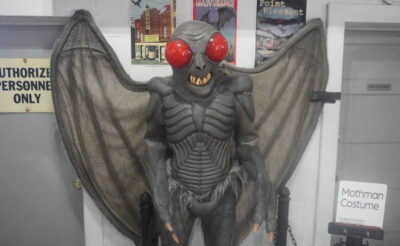
Unknown animals soaring through America’s skies are a slightly rarer cryptid type. Most eyewitness reports describe creatures larger than a known bird. The reports of winged cryptids can be wild. For instance, the hooved Jersey Devil’s demon-like appearance feels like something straight out of American folklore. Others, like the Thunderbird, are closer to a normal bird, only oversized.
Most of these stories are incredibly old. The Thunderbird legend has roots in traditional Native American tales. Reports of winged cryptids describe everything from oversized birds to alien-like creatures from another world. Some of these reports include sightings of UFOs and other strange phenomena in conjunction with the creature reports. America’s more famous winged cryptids include the following:
Jersey Devil: An unusual, winged, and hooved cryptid, most famous in New Jersey. Thousands of reports have come from the state’s Pine Barrens area over the last 250+ years.
Teratorns: Gigantic, prehistoric vultures that allegedly survived to modern times. New Mexico claims the most sightings of this lost bird.
Thunderbird: This gigantic bird is a Native American legend that sometimes controls the weather through the beating of its wings. Most often reported in North Dakota. One allegedly tried to carry away a 10-year-old boy during a famous 1977 incident in Illinois.
Mothman: Red, glowing eyes are a key feature of this bat-like creature. Point Pleasant, West Virginia, was the epicenter for sightings in the 1960s. Sightings before a famous bridge collapse in 1964 have led some to label Mothman as a harbinger of tragedy.
Van Meter Visitor: A pterosaur-like oddity sighted in Iowa in 1903. Old newspaper reports describe it as having an “unusual glowing horn.”
Water Cryptids
The Loch Ness Monster is the most famous water cryptid in the world, but it is far from the only one. Reports of water monsters span the globe. North America is no stranger to these tales. The common similarity in these reports is that the sightings take place either in or near water. Water cryptid tales seem localized in nature. Residents know the tales, but they usually fly under the radar of mass media.
The one exception in the United States seems to be Lake Champlain’s plesiosaur-like “Champ.” Reports of that monster date back to the early 1800s. P.T. Barnum once put a bounty out for the live capture of the creature.
Sea serpents and plesiosaurs are the most common water cryptids. However, there are some real oddities here. For example, the otherwise unremarkable town of Churubusco, Indiana, is allegedly home to an oversized snapping turtle named Oscar. Loveland, Ohio, turned their unusual 1970s “Frogman” reports into a town mascot and source of tourism.
Unfortunately, none of the United States’ water cryptids have come close to Nessie’s fame, but they still make for fun legends. America’s most famous water cryptids include:
Alkali Lake Monster: Nebraska legend about an alligator-like beast. Reports date back to the late 1930s.
Champ: The plesiosaur-type creature in New York and Vermont’s Lake Champlain. Sightings of this creature date back hundreds of years. Analysis of a 1977 photo has been unable to prove or disprove its authenticity.
Tahoe Tessie: Lake Tahoe’s resident sea serpent legend that allegedly lives in the deepest, darkest depths of the lake.
Altamaha-ha: This monster is a mix of Native American legend and early Georgia folklore. The creature is allegedly 10-30 feet long and has a head resembling that of a crocodile and a body resembling that of a sturgeon.
Sharlie: Reports of this sea serpent in Idaho’s Payette Lake date back over one hundred years. Eyewitnesses claim this creature was 40 feet in length.
Beast of Busco: A dining room table-sized Indiana snapping turtle named “Oscar.” Locals tried using traps and even dynamite to capture it, without success. This legend has a local yearly festival named after it.
Sink Hole Sam: An unusual sea serpent legend for land-locked Kansas. Reports sometimes describe a giant eel or worm.
Pocomoonshine: An ancient Native American legend about a 30-foot sea serpent in Maine’s Pocomoonshine Lake. Sightings of this creature date back to the late 1800s.
Loveland Frogman: Four-foot-high humanoid frogs were sighted in Loveland, Ohio, in 1972. This cryptid is now the official town mascot.
Oklahoma Octopus: An out-of-place giant octopus allegedly inhabiting the state’s manmade reservoirs.
Colossal Claude: Oregon’s Columbia River is allegedly home to this 40-foot-long sea serpent. The most notable sighting happened in 1937.
Block Ness Monster: Rhode Island’s resident sea serpent legend. Beachgoers found a mysterious carcass in 1996. However, the body disappeared before scientists could study it.
Bear Lake Monster: Utah legend about a 50-foot creature inhabiting Bear Lake since the mid-1800s.
Uncategorical Cryptids
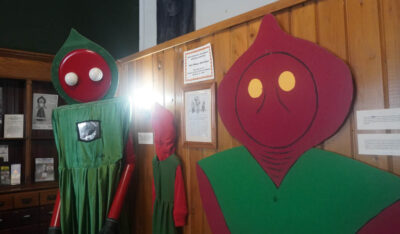
Other cryptids have descriptions that defy all classifications. These creatures couldn’t fit into any other category. For instance, the Enfield Horror’s three legs and red eyes do not match any known Earth animal. Other tales, such as the human hybrid Goatman, feel like straight-up science fiction. Consequently, some of these stories have become modern folklore. However, other cryptids still have origins in Native American legends and lore. Overall, these reports are straight-up weird.
The unusual descriptions of these creatures have led to speculation that they came from another world. Two prime examples are the hairless Dover Demon and the Hopkinsville Goblin incident in 1955. In the Hopkinsville incident, eyewitnesses reported a UFO in the sky before the creature’s arrival.
Tornit: An Inuit legend about a tribe of wild men in Alaska. However, unlike other Native legends, the Tornit allegedly once lived peacefully alongside the Inuit. Often referenced in tandem with stories about Bigfoot.
Slide-Rock Bolter: Lumberjacks popularized tales of this fish or whale-like creature in the Colorado mountains.
Melon Heads: Small, humanoid creatures with large heads reported in several states. Connecticut’s Fairfield County is a frequent area for sightings.
Menehune: Traditional Hawaiian folklore about a tribe of tiny people who live in the forest. Only children can see them.
Enfield Horror: A bizarre, three-legged jumping creature seen multiple times near Enfield, Illinois, in 1973.
Hopkinsville Goblins: Three-foot-high, gremlin-like creatures that attacked a Kentucky farmhouse in 1955. Eyewitnesses said the creatures were impervious to shotgun blasts.
Rougarou: A werewolf-like creature popularized in Louisiana’s Cajun folklore.
Goatman: Maryland’s strange half-man, half goat legend. Goatman became famous for attacking cars late at night.
Dover Demon: A four-foot-tall creature with a featureless face except for a pair of red eyes. The sightings happened near Dover, Massachusetts, in April 1977.
Michigan Dogman: Werewolf-like creatures seen throughout the state. Lumberjacks first reported sightings of Dogman in the 1890s. However, the legend did not enter pop culture until the release of a popular song in the 1980s.
Wendigo: A terrifying Native American legend about humans turning into cannibalistic monsters. Wendigo has at least two real-life murders involving cannibalism associated with it.
Pascagoula Aliens: Unusual humanoids with crab-claw hands that captured two anglers in 1973. The men claimed the creatures took them aboard a UFO.
Shunka Warakin: A cryptid hyena or werewolf-like canine hybrid spotted in Montana.
Woods Devils: The nickname given to New Hampshire’s resident Bigfoot Lore. However, this one has a twist. The Woods Devil sometimes has tree-like features.
Beast of Bladenboro: An alleged big cat that terrorized Bladenboro, North Carolina, in 1954. This beast left behind dozens of dead dogs, chickens, and rabbits in its wake.
Squonk: A stout, ugly creature of Algonquin folklore said to inhabit the forests of Pennsylvania. Legend says that when captured, the Squonk dissolves into tears and vanishes.
Lizard Man of Scrape Ore Swamp: A gigantic, seven-foot lizard reported by South Carolina residents. It had a reputation for chasing and scratching cars.
Chupacabra: Spanish for “goatsucker.” This creature has two descriptions. Early reports were of a reptilian beast. More recent reports depict something closer to a feral dog with mange. Reports range across Mexico, Puerto Rico, and the southern United States.
Bunny Man: An urban legend of Maryland and Virginia of a man in a bunny costume. He allegedly smashed the windows of multiple cars with an axe.
Beast of Bray Road: Wisconsin’s resident werewolf-like creature legend. Most sightings occurred in the 1990s, primarily in and around the town of Elkhorn.
Jackalope: Regular rabbits that have antlers. These unusual creatures have become a symbol of Americana and a fixture in tourist traps of the Western U.S.
Closing Thoughts
The dark woods feed into our imagination, making it easy to imagine the wondrous and mysterious beasts that inhabit the shadowy areas. There have been times when I sat in a treestand in the pre-dawn hours, while knowing an animal was in front of me. However, due to the darkness, I couldn’t properly identify whatever was snapping twigs and breaking brush. Plenty of outdoor enthusiasts have had similar experiences hunting, fishing, and camping.
Thus, it is little wonder that cryptid stories hold special significance in American pop culture. These stories tap into our natural curiosity about the unknown. Consequently, even the skeptics must admit that these tales make our lives more interesting. At the very least, it is fun to speculate about what else might be out there.
While we may be living in an information age, that doesn’t mean the planet has spilled all its secrets. Scientists continue to find and classify hundreds of new species every year. Knowing that, we hold out hope that some of our favorite cryptids eventually make it onto the lists of known animals. Until that happens, we will continue to enjoy the mysteries for what they are.
Trending Products












